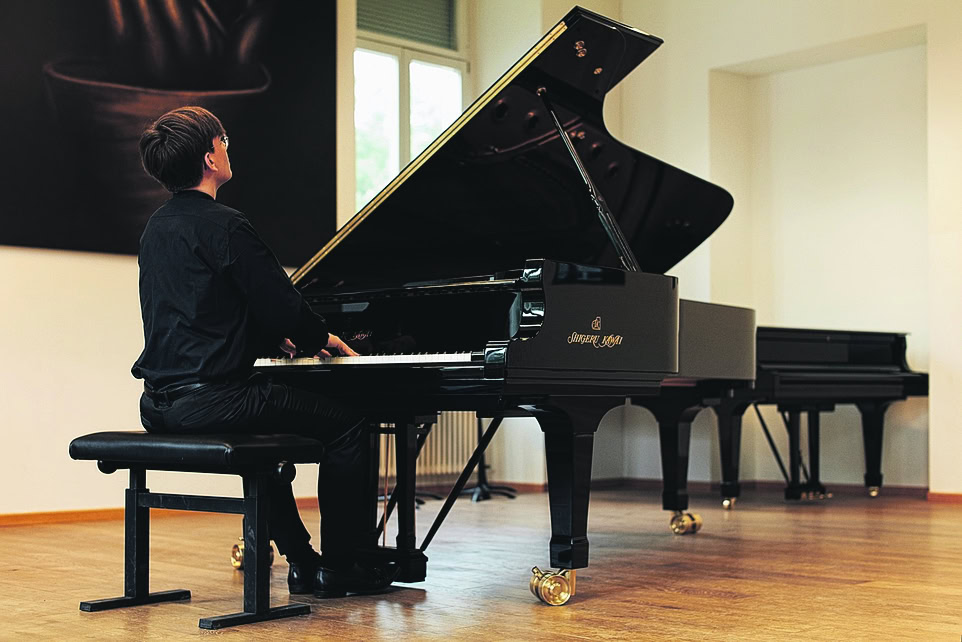Better not to be moved to tears
Emotions such as crying, anger or rage, but also dust, wind, cold air, irritant gases and so on can cause the eyes to water. This can lead to problems, especially when making music.

Georg von Arx - Watery or even watery eyes often only occur in special situations. During demanding visual activities such as reading, working on a PC or making music, even slightly watery eyes can lead to a considerable reduction in performance. Common causes of watery eyes are conjunctivitis, dry eyes, eyelid malpositions, drainage obstructions in the draining tear ducts and much more. These causes will not be discussed in detail here.
Functional disorders that do not appear to have an obvious cause are more important for musicians, as they are difficult to control. In the interplay of local and central control factors during visually demanding activity, a central reduction in the blink rate, i.e. controlled by the brain and nervous system, causes increased evaporation of the tear film and thus a relatively dry eye.
The more we concentrate on our visual task, the less frequently we blink. The tear film becomes unstable, breaks up and causes a "dryness irritation" of the cornea, which in turn triggers increased, sometimes excessive tear secretion via a reflex arc. This can be exacerbated in particular by insufficient lighting (for example in the orchestra pit), as we then reflexively "tear open" our eyes even more and blink even less frequently. Optimum lighting of the music stand (without glare!) is therefore also important in this respect.
Blinking is a rapid, usually involuntary and unnoticed closing and opening of the eyelids (eyelid closure reflex), which primarily serves to maintain the tear film and thus the optimal optical quality of the visual system. We normally blink about 12 to 15 times per minute, i.e. every 4 to 6 seconds, over an average period of 300 to 400 milliseconds. The dark phase caused by eyelid closure is not consciously perceived, as visual perception is suppressed in the relevant areas of the brain shortly before blinking.
Monotonous visual work, especially, as already mentioned, with inadequate lighting of the work area and work with high visual demands lead to staring at the work area with a decrease in blink frequency of more than 50 percent. Frequent but brief interruptions to work for a few minutes can improve the moistening of the cornea sufficiently so that there is no increased reflex tear secretion and therefore no watery eye.
Crying can be an expression of strong emotions such as pain, sadness, helplessness, fear, feelings of deep hurt and injustice. These emotionally induced tears do not play a role in professional musicians in that they have learned to control their emotions in the course of their work. The "tear center" is connected to various regions of the brain, such as the limbic system ("emotional center"), but also to the frontal brain. The functions of the frontal brain concern the reception and processing (control) of sensory information for perception, thinking, language, motor operations, activity, movement and action control, voluntary movements and actions, consciousness, higher intellectual processes and emotional-affective aspects of behavior.
Nevertheless, a particularly "touching" piece of music can touch the corresponding emotional "button" and make us cry, which can then cloud our clear view of the sheet of music. It is not uncommon for poorly corrected defective vision to cause watery or even watery eyes. This is because the eye then has to work much harder to see well. Visual aids that are individually and optimally adapted to professional needs can provide a remedy.
Dr. med. Georg von Arx
Ophthalmologist FMH
Admedico Eye Center
Fährweg, 4600 Olten
> info@admedico.ch








